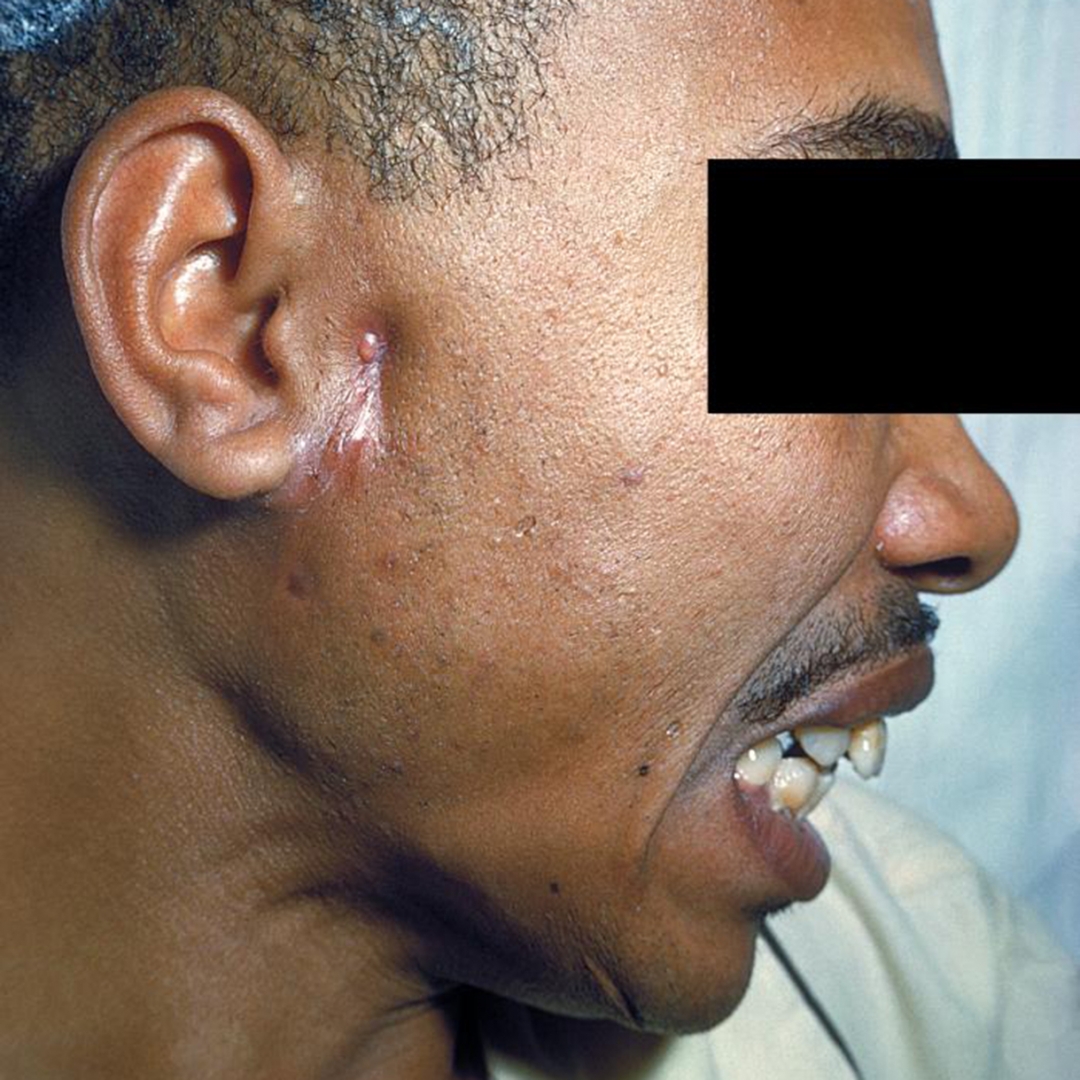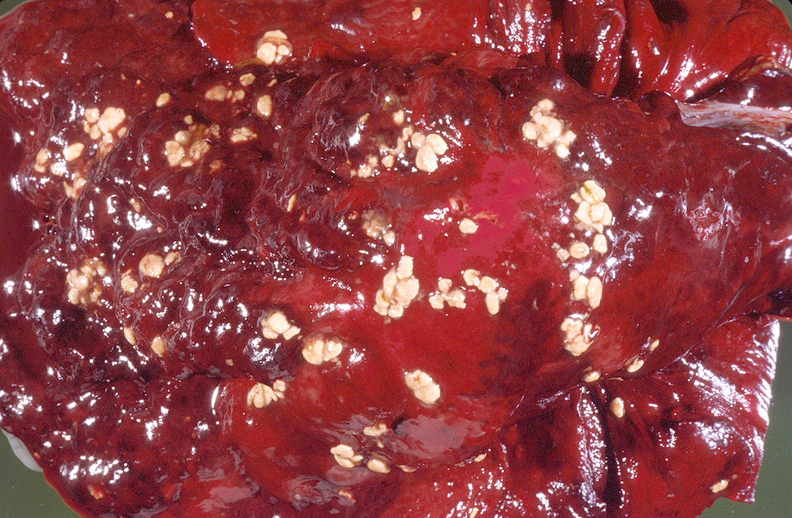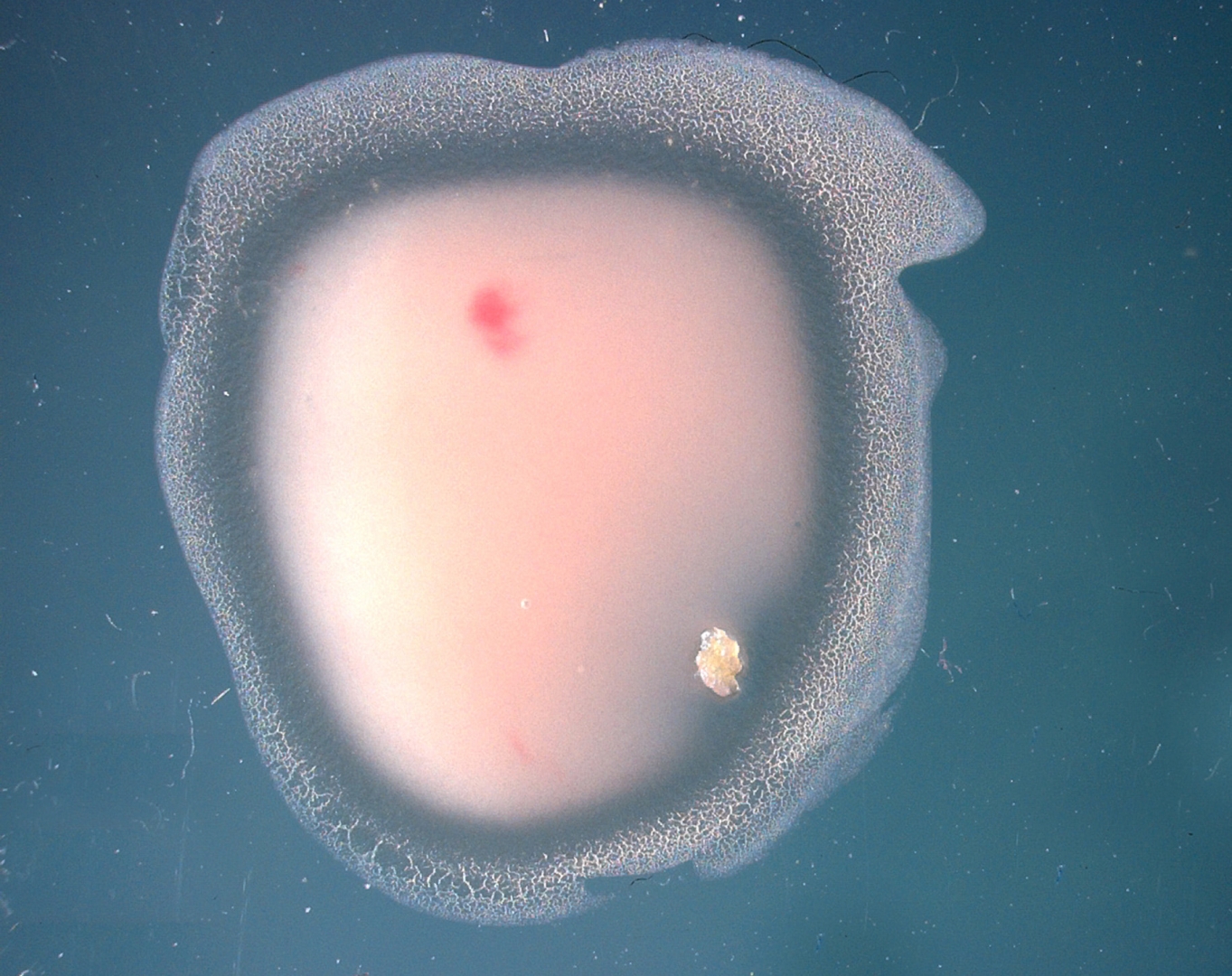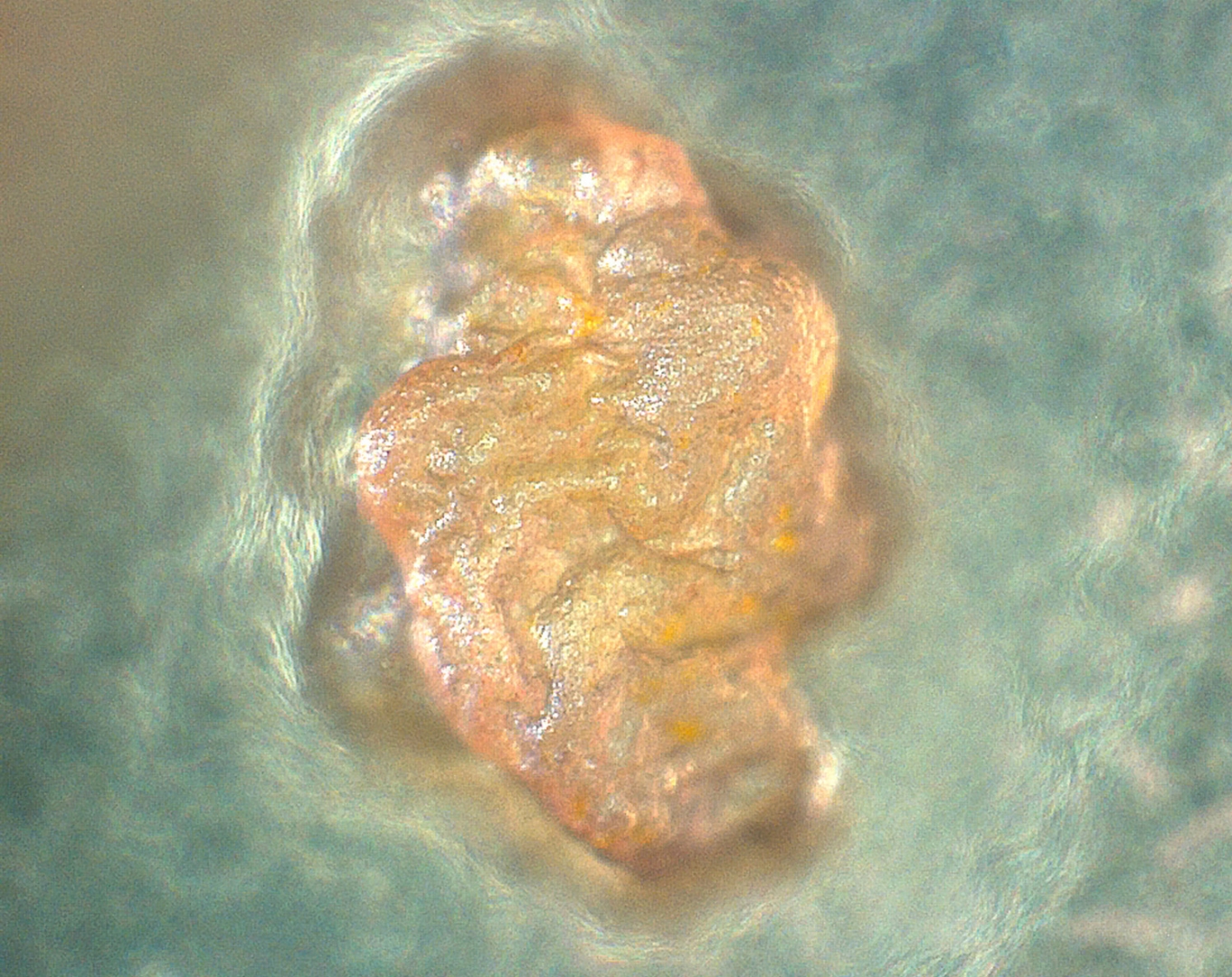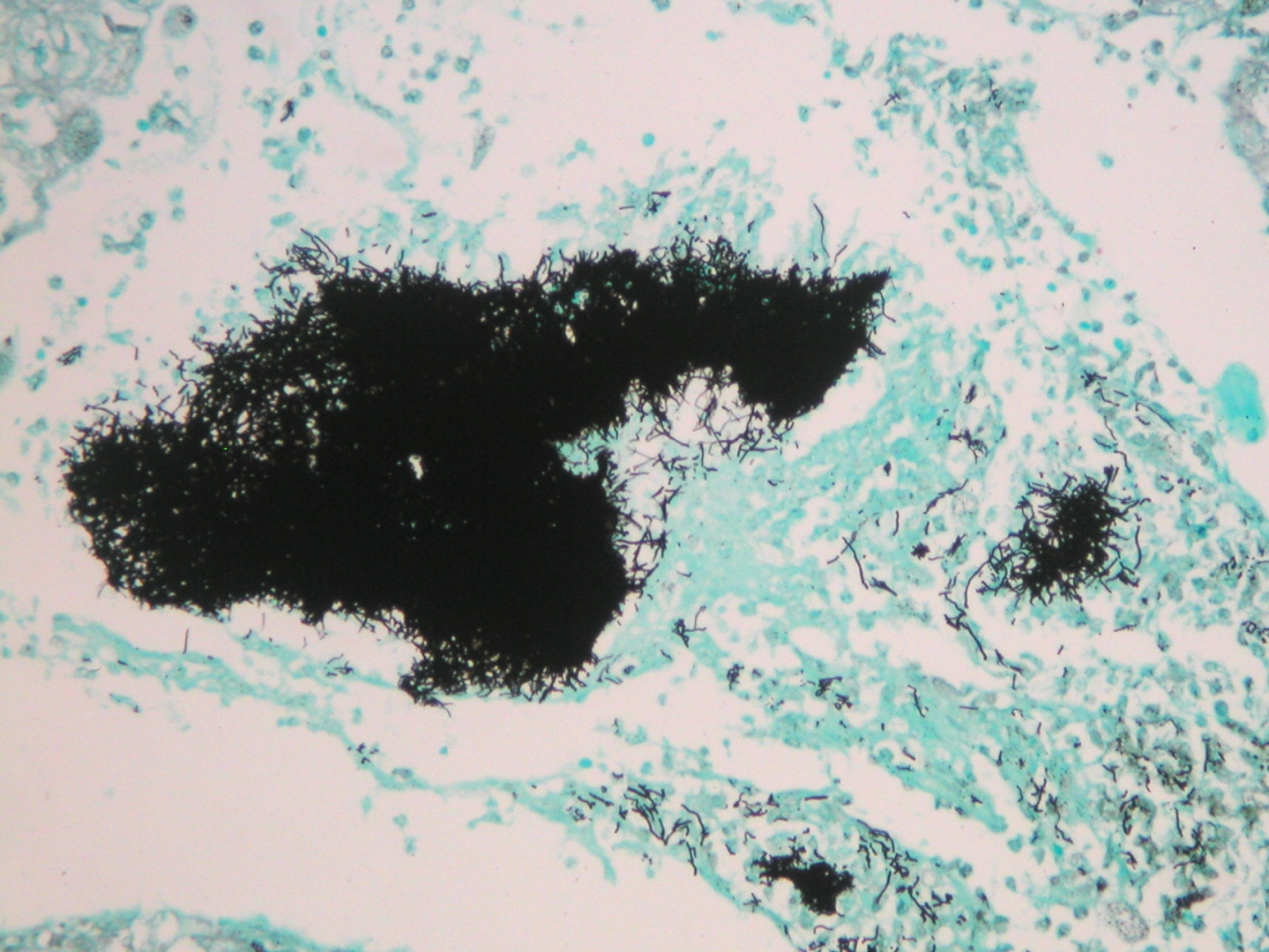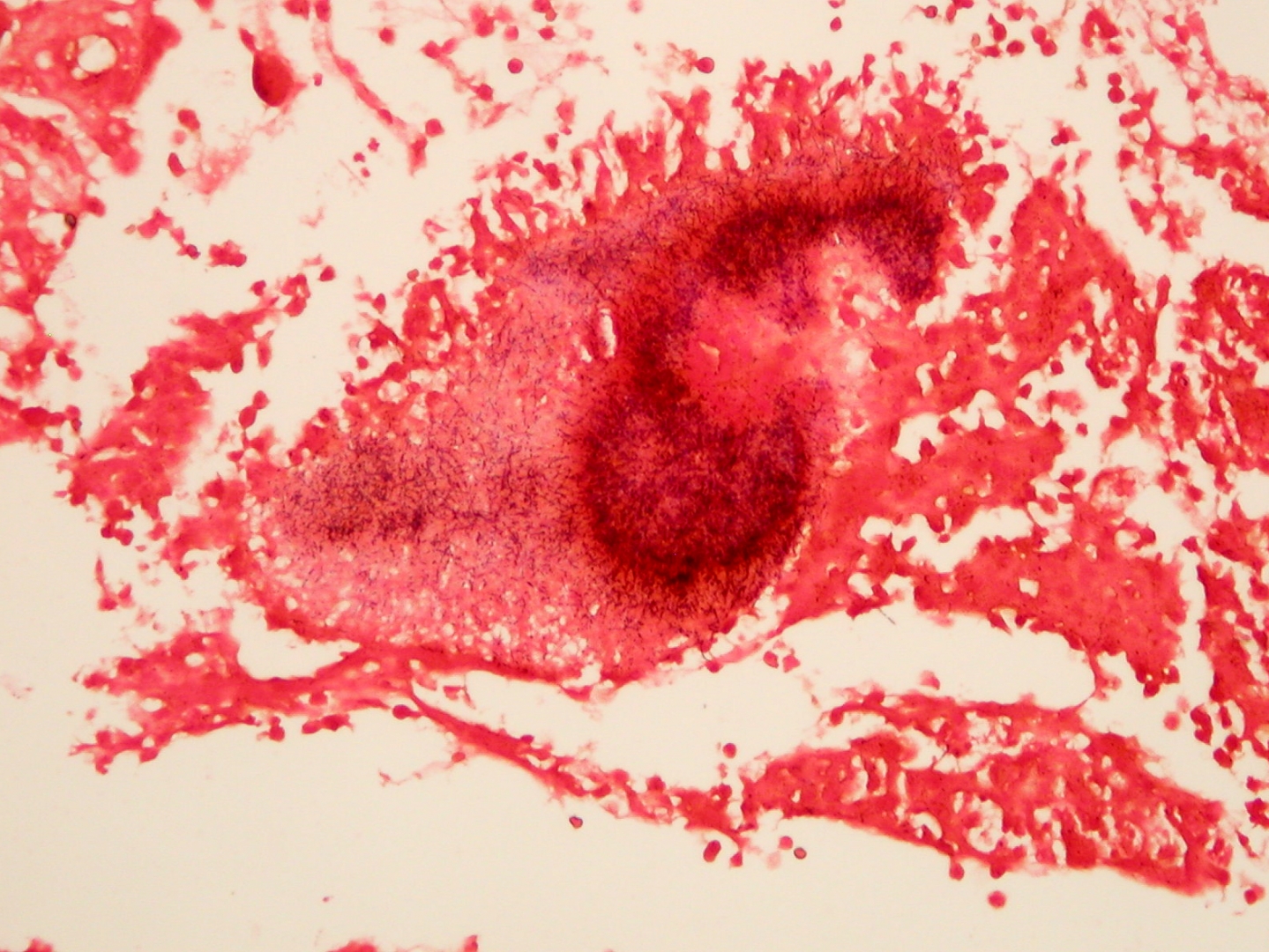♦ What is Actinomycosis?
Actinomycosis is a rare infectious bacterial disease caused by Actinomyces species. About 70% of infections are due to either Actinomyces israelii or A. gerencseriae.
Infection can also be caused by other Actinomyces species, as well as Propionibacterium propionicus, which presents similar symptoms. The condition is likely to be polymicrobial anaerobic infection.
♦ Signs and symptoms
The disease is characterised by the formation of painful abscesses in the mouth, lungs, breast, or gastrointestinal tract.
Actinomycosis abscesses grow larger as the disease progresses, often over months. In severe cases, they may penetrate the surrounding bone and muscle to the skin, where they break open and leak large amounts of pus, which often contains characteristic granules (sulfur granules) filled with progeny bacteria.
These granules are named due to their appearance, but are not actually composed of sulfur.
♦ Causes
Actinomycosis is primarily caused by any of several members of the bacterial genus Actinomyces.
These bacteria are generally anaerobes. An affected human often has recently had dental work, poor oral hygiene, periodontal disease, radiation therapy, or trauma (broken jaw) causing local tissue damage to the oral mucosa, all of which predispose the person to developing actinomycosis.
A. israelii is a normal commensal species part of the microbiota species of the lower reproductive tract of women.They are also normal commensals among the gut flora of the caecum; thus, abdominal actinomycosis can occur following removal of the appendix. The three most common sites of infection are decayed teeth, the lungs, and the intestines.
Actinomycosis does not occur in isolation from other bacteria. This infection depends on other bacteria (Gram-positive, Gram-negative, and cocci) to aid in invasion of tissue.
♦ Diagnosis
The diagnosis of actinomycosis can be a difficult one to make.
♦ Treatment
Actinomyces bacteria are generally sensitive to penicillin, which is frequently used to treat actinomycosis.
In cases of penicillin allergy, doxycycline is used. Sulfonamides such as sulfamethoxazole may be used as an alternative regimen at a total daily dosage of 2-4 grams. Response to therapy is slow and may take months.
♦ Epidemiology
Disease incidence is greater in males between the ages of 20 and 60 years than in females.
Before antibiotic treatments became available, the incidence in the Netherlands and Germany was one per 100,000 people/year. Incidence in the U.S. in the 1970s was one per 300,000 people/year, while in Germany in 1984, it was estimated to be one per 40,000 people/year.
The use of intrauterine devices (IUDs) has increased incidence of genitourinary actinomycosis in females. Incidence of oral actinomycosis, which is harder to diagnose, has increased.
Actinomycosis
Related
References
Wikipedia
Photos
Peter Anderson_Pleural cavity, Actinomyces sulfur granules
Journal of Postgraduate Gynecology & Obstetrics_Ruptured mass showing sulfur granules.
MMIZ, ErasmusMC, Rotterdam_Loes van Damme

- Actinomycosis
- Anthrax
- Biopsy Sinusitis_Aspergillus flavus
- Botulism
- Brucellosis
- Cat Scratch Disease
- Cellulitis
- Cholera
- Creutzfeldt-Jakob Disease
- Cystic Fibrosis_CF
- Diphtheria
- Erysipelas
- Erysipeloid or fish poison
- Legionnaires disease
- Lemierre syndrome
- Leprosy
- Listeriosis
- Lyme / Borreliosis
- Melioidosis
- Meningitis
- Plague
- Syphilis
- Tetanus
- Trench Mouth_Plaut-Vincent_acute necrotizing ulcerative gingivitis
- Tuberculosis (TB)
- Tularemia_Rabbit Fever
- Typhoid fever (Epidemic typhus)
- Whooping Cough

